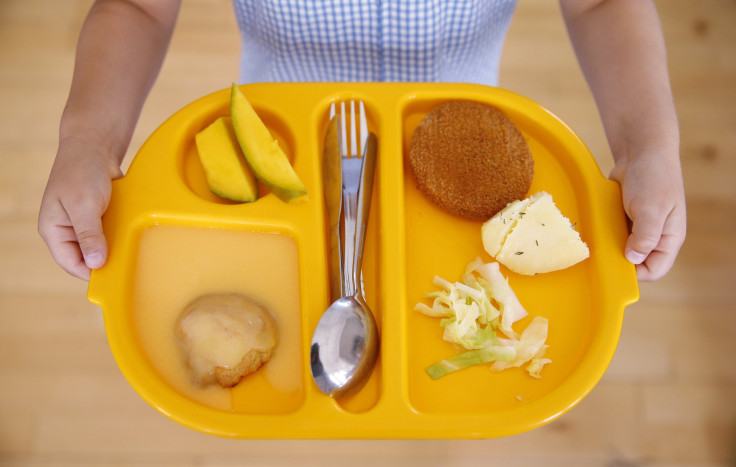Putting Smileys On Cafeteria Food May Improve Kids' Food Choices

Studies show that putting smiley faces on food labels and giving out prizes for healthy eaters can entice students to eat more healthily. A low-cost and highly effective method to boost nutrition has come out of a study conducted at an inner-city school in Cincinnati.
Food items in school cafeterias may contribute to the increasing incidence of obesity. This is the reason why efforts to fight against obesity have been initiated by improving poor food selection in cafeterias.
In line with this, experts conducted a two-part experiment amongst children in the kindergarten up to the sixth grade levels. In the first part, the researchers placed a green smiley emoticon on the school cafeteria’s healthiest food items, including vegetables, fruits, whole grains and plain white, fat-free milk. The second part of the experiment was done after three months; this involved the introduction of the “Power Plate,” which consisted of four different types of nutritious food. A small prize, such as a temporary tattoo, sticker or mini beach ball, awaited children who ordered the “Power Plate.” The authors utilised the cash register receipts to track the percentage of healthy food purchases after five months.
The findings of the experiment, which was published by the American Academy of Paediatrics, yielded the following data: total milk sales rose by 549 percent (from 7.4 to 48 percent), fruit selection increased by 20 percent (from 1 to 1.2 percent) and vegetable purchases shoot up by 62 percent (0.74 to 1.2 percent). All in all, the “Power Plate” increased in sales by 335 percent from baseline.
"It looks like we found a very promising, low-cost and effective way of improving the nutrition of elementary school children," noted study author Robert Siegel, MD, FAAP, medical director of the Center for Better Health and Nutrition of the Heart Institute at Cincinnati Children's Hospital Medical Center. "This type of program may be a useful component in schools trying to improve the nutrition and health of their students."
To contact the writer email rinadoctor00@gmail.com





















